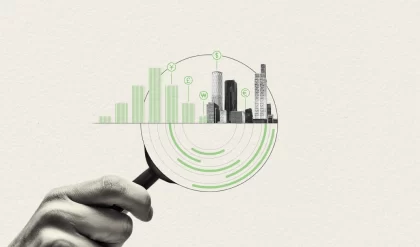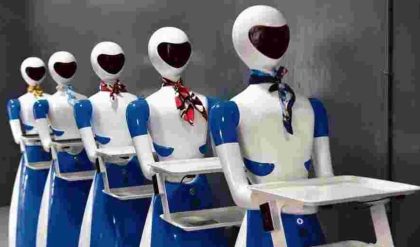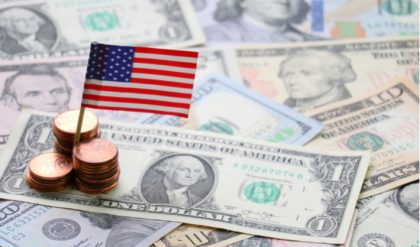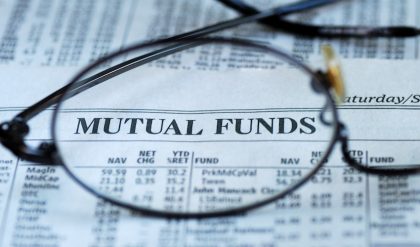
There’s a large spot reserved in the popular imagination for the Platonic ideal of an out-of-control market, a stunning collective enthusiasm that was bound to end in ruin: the tulip mania of the Netherlands, which ended in 1637. Tulips, a newly fashionable luxury item, temporarily became more valuable than houses — until, obviously, the inevitable market correction, which ruined fortunes and tore a nation apart.
Except this is a myth: The historian Anne Goldgar, in her 2007 book on the topic, wrote that while tulip prices certainly got a bit silly in the 1630s, she could find no evidence of anyone going bankrupt over them. The tulip was simply a luxury commodity that underwent a brief upward swing in value. The more entertaining version was brought to us by the anti-tulip propaganda of the age: pamphlets spreading exaggerated tales about these wilting, decadent symbols of wealth and the ruin they brought with them.
And yet the story of the tulips is still lodged in the modern mind as the perfect case study of a “bubble” — more so, even, than the South Sea Bubble, one of several speculative crazes of the early 18th century, in which British investors were thrown into panic by the rise and fall of a preposterously overvalued trading company. To this day, people use tulips to express their incredulity over inflated values. Last December, the investor Dennis Gartman appeared on CNBC and called the rising value of Bitcoin a “classic bubble” that, compared with tulip mania, “has gone even beyond that absurdity.” At a recent conference, the Italian economist Massimo Amato said the cryptocurrency was “like a virtual tulip.”
The persistence of such comparisons probably has something to do with how effectively tulip mania works as a fable, with a flattering moral at its core: If the people around you seem to be behaving irrationally, perhaps you’re correct, and everyone else is deluded. Others are inside the “bubble,” incapable of spotting the distortions that are obvious to you. Of course houses are more valuable than flowers. Gartman and Amato, for instance, might have taken some grim satisfaction from what happened to Bitcoin in recent weeks: As of late November, it was trading at just over $3,700, down from a peak that neared $20,000, and the N.Y.U. economist Nouriel Roubini was tweeting about feeling “vindicated” that “this cryptobubble went bust for good.”
The trouble is that financial bubbles turn out to be far harder to recognize than you might think. Economists have spent decades debating precisely what they are, and how an observer might spot one in the wild, without arriving at a clear consensus. The Nobel Prize-winning Robert J. Shiller, in his 2000 book “Irrational Exuberance,” considers them simple enough, but the equally Nobel Prize-winning Eugene Fama is skeptical of the very concept of a bubble, partly because he believes that it’s impossible to predict, mathematically speaking, whether you’re in one. Even after what looks like a catastrophic crash, value can rebound — as has happened in the past, many of the times Bitcoin has been declared doomed. The temptation to spot bubbles is widespread; the ability to actually identify them, less so.
You could potentially blame a completely different kind of “bubble” for the once-soaring value of Bitcoin: the ideological enclave of cryptocurrency evangelists. In Forbes, Jason Bloomberg wrote that “most of the noise around both blockchain and crypto is little more than the community talking to itself — a massive ‘echo chamber.’ ” We like to imagine ourselves as cannily seeing through such echo chambers — the self-reinforcing intellectual snow globes of people who get all their information from one another, who imagine that all the world works like their particular corner of it.
But we seem to have less faith in everyone else’s ability to do the same. Witness recent accusations that liberals live in a “coastal bubble,” full of coddled elites who understand more about avocados than about the crises of Rust Belt towns. Or the counteraccusation: that rural Americans have alarmingly little real exposure to people or lifestyles even slightly different from their own. In a September article at Washington Monthly, Nancy LeTourneau warned of an “information bubble” that was, according to one poll, leading 57 percent of strong Trump supporters to doubt that Democrats had a chance of capturing the House in midterm elections — calling back to the libertarian writer Julian Sanchez’s blogged 2010 warning that the conservative movement was “moving toward epistemic closure,” though not the liberal activist Eli Pariser’s 2011 book arguing that online “filter bubbles” were presenting us all with information that flattered our existing biases.
If you’re trying to sort out why your ideological opponents seem, to you, so obviously foolish, here is one explanation that presents itself constantly. They are stuck in a “bubble,” unable to recognize any new information that doesn’t match their convictions — about life, about America, about politics, about the value of notional currencies, about the relative values of tulips and houses, about anything.
But this, too, may be less clear-cut than it feels. Pariser’s notion of a “filter bubble” suggested that we were being divided by flaws in the infrastructure of the internet — things like personalization algorithms, which offer us precisely the information we’re already inclined to want — meaning we might solve the problem with better engineering. More recent research, though, has suggested that this may not be where the problem lies; the statistician Seth Flaxman, writing with other researchers in Public Opinion Quarterly, has found that the influence of search algorithms on individual browsing bias may not be as strong as it seemed. And while it’s often taken as a given that social media is politically polarizing, there’s evidence to suggest that the demographic groups that have polarized recently are the ones least likely to use social media.
It’s obvious that Americans live in social bubbles — living and talking in circles divided by economics, race, ideology, geography, taste and so on. The problem arises as soon as you try to differentiate those that constitute real “bubbles” — which is to say, self-reinforcing spheres of blindness or irrationality — from those that might just as easily be called “cultures” or “communities,” groups of people who share experiences and convictions. Such groupings will certainly have drawbacks; our shared preconceptions often limit us. But to use the word “bubble” as a stand-alone pejorative is to focus on the ignorance inherent in a given worldview, rather than the insights; it’s to examine ideological opponents and conclude that the only reason they could possibly believe what they do is because they haven’t examined alternatives.
It’s nice to imagine that we can broaden someone’s understanding of the world by illuminating their blind spots. The problem is that our helpful corrections are likely to be totally wrong. A well-meaning diagnosis of conservative bubbles like LeTourneau’s — “when everyone you know is a Republican,” she writes, “you can’t imagine anyone who isn’t” — might run up against complicated research results: say, one that indicates conservatives are actually better at modeling liberal beliefs than the other way around.
The difficulty of getting it right might explain the overwhelming vindication people clearly feel when someone else’s ideological bubble really has been pricked. Less than two days after President Trump’s electoral victory, The New York Post published a column by Michael Goodwin that was positively triumphant about it: “The cluelessness in media and political circles about the Trump voter surge,” he wrote, “confirms that the ruling class is cosseted deeply in its bubbles and isolated from the concerns of other Americans.” So long as we’re not among a bubble’s inhabitants, its popping flatters our own delusion: that we’re among the few right-thinking people who accurately measure value, who accurately perceive reality, who see far more clearly than the sheeplike, tulip-loving half-wits around us.
What might be more helpful, when talk of a “bubble” crops up, is to think of yourself, rather than others — to be vigilant about the possibility that the most meaningful bubbles are the ones you’re not aware of, rather than the ones you’re eager to spot. They are, after all, incredibly pleasant and convincing when you’re on the inside. The value they create is not an illusion: There is much to be gained from being in mental harmony with those around you, let alone owning something people are paying absurd prices for. It’s dispiriting, perhaps, to think our various blinkers might not be easy to identify, but knowing this offers a sort of peace — the peace of spending less time wondering why everyone else is so hopelessly blinkered. If you’re skeptical of your own ability to see everything clearly, you’ll be less surprised when the actions of others refuse to blow up in their faces — or, perhaps, when you hear your own world emit an unexpected pop.






Comments are closed.